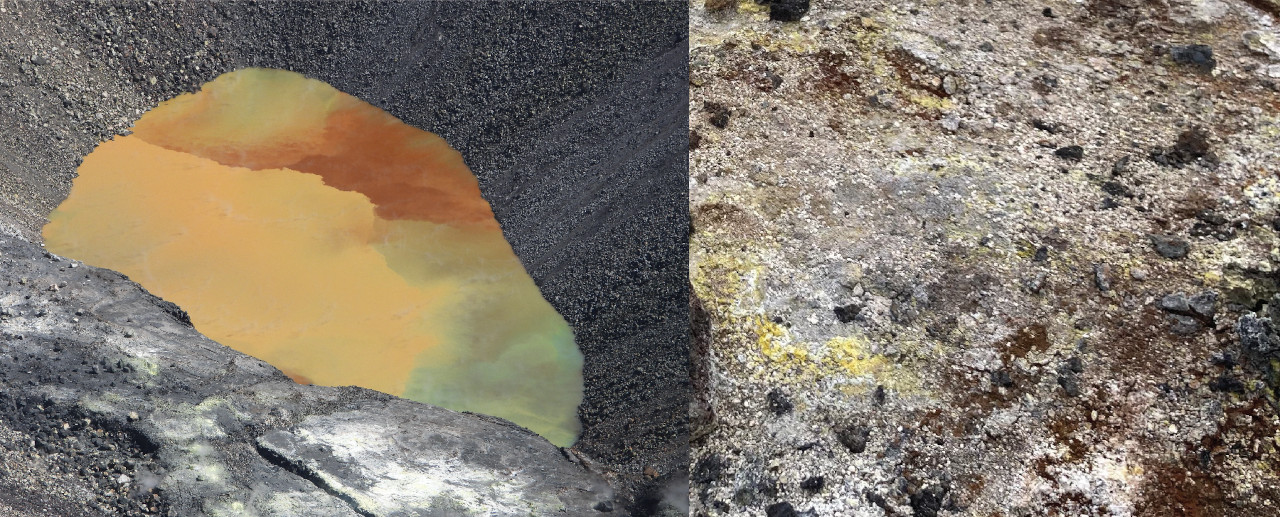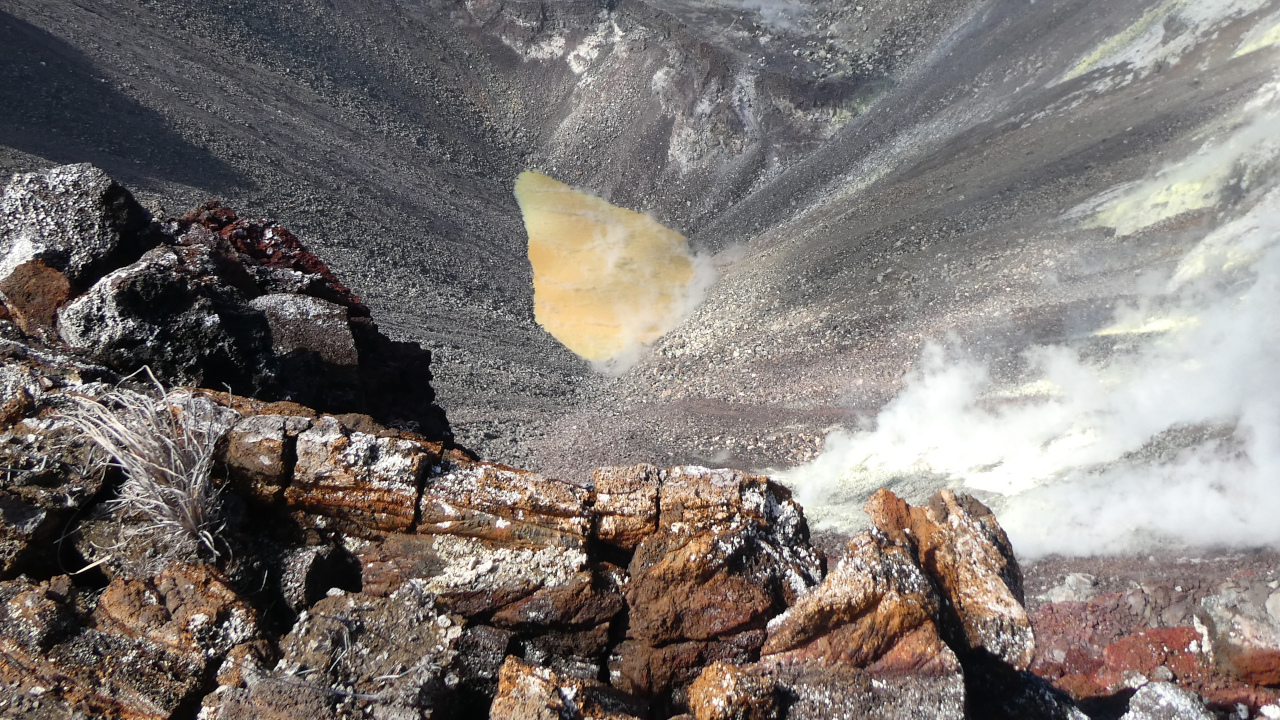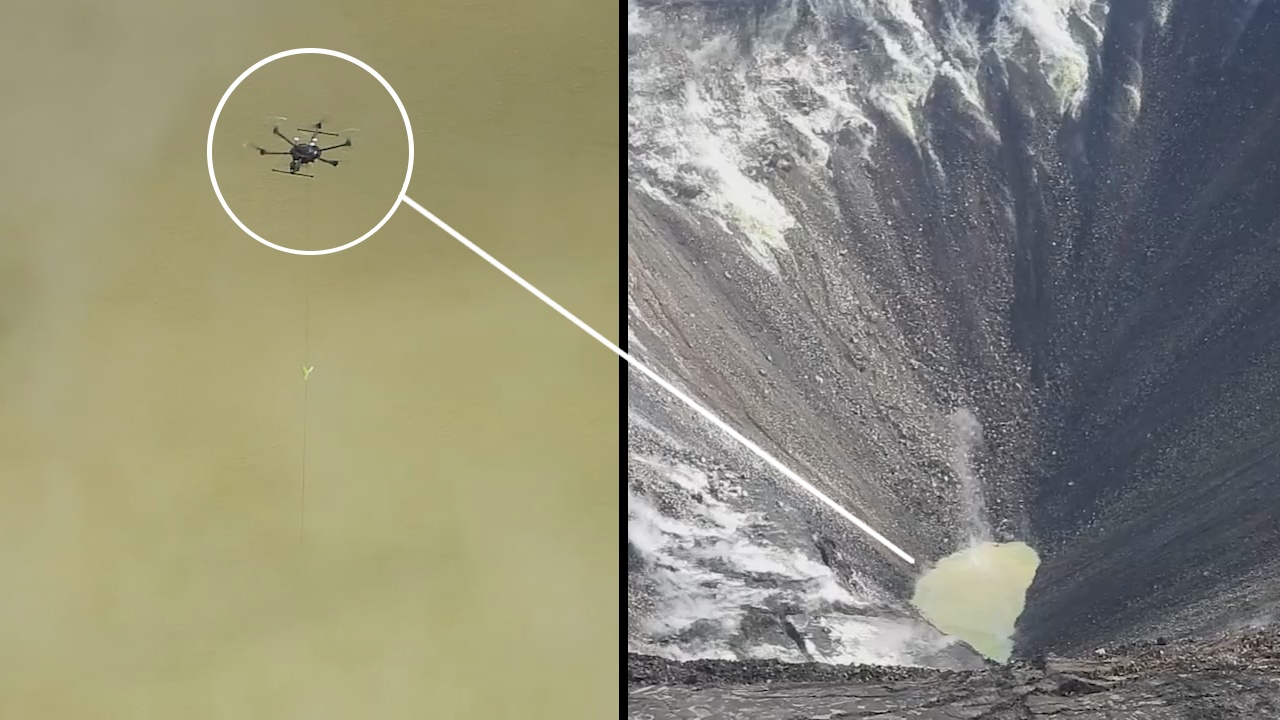(BIVN) – From this week’s Volcano Watch article, written by U.S. Geological Survey Hawaiian Volcano Observatory scientists and affiliates:
Remember when a little puddle of green water was spotted in Halemaʻumaʻu? Time flies, because that was late July 2019—over five years ago! And because we’ve had multiple eruptions and intrusions since then, the water lake sometimes feels forgotten in the larger history of Kīlauea.
Now that we’ve reached the five-year anniversary of that puddle of water showing up, we thought we’d take the opportunity to remind you about the lake and fill you in on what we learned over the course of its nearly 1.5-year existence.
Monitoring and understanding the lake was important because the presence of water increased the possibility of violent phreatic (steam-driven) explosions once Kīlauea erupted again, as there have been such eruptions in Kīlauea’s past.
During the lake’s lifetime, the USGS Hawaiian Volcano Observatory (HVO) kept a close eye on the color, level, and temperature of the lake; at other volcanoes, phenomena like a sudden color change or boiling can be precursors to eruptions.
The water level measurements made by HVO staff revealed that the lake rose steadily and was not affected by rainfall, which meant that it was fed by groundwater. Measurements made by thermal camera also showed that the water was so warm (up to about 80°C, or 175°F) that at least half the groundwater flowing into the lake evaporated away rather than remaining in the lake itself.
The lake was inaccessible on foot, and using a helicopter to sample the water was deemed too hazardous. Instead, after careful planning and discussions with Hawaiʻi Volcanoes National Park, HVO obtained water samples from the lake using uncrewed aircraft system (UAS, or drones)—first on October 26, 2019, and for a second time on January 17, 2020.
Travel and fieldwork restrictions in 2020 due to COVID-19 prevented sampling again as quickly and as often as we would have liked, but eventually, a third sampling was conducted on the 1-year anniversary of the first sample, October 26, 2020. Interestingly, the chemical composition of the lake changed very little in the year between the first and third sampling campaigns.
The lake water was acidic (pH of approximately 4), but not as acidic as most acid volcanic lakes around the world (pH of about 1), and it contained large amounts of dissolved iron, magnesium, and sulfur.
We determined that the iron and magnesium were leached from Kīlauea’s basaltic rocks. The iron also was responsible for the lake’s many colors. The initial greenish color was due to the form of iron that exists in Kīlauea basalts. As that iron in the water spent more and more time in the lake and in contact with oxygen in the atmosphere, it transformed to another form of iron that creates orange- and brown-colored minerals, similar to rust that forms on metal objects. That explains why the lake changed color from green to brown over time; the green water that frequently reappeared at the lake’s edges was another line of evidence that told us the lake was consistently being fed by groundwater with the green form of iron.

Left: Kīlauea’s water lake on November 17, 2020 (photo by M. Patrick). The orange and brown colors are caused by the presence of various oxygen- and sulfur-bearing iron minerals in the water. The green at the edges is caused by an influx of iron-bearing groundwater that has not yet had time to react with oxygen in the atmosphere. Right: Alteration minerals near Sulphur Cone on Mauna Loa, September 8, 2022 (photo by T. Elias). Similar minerals at Kīlauea would have been dissolved into the lake to cause the high sulfur concentrations in the water. USGS images.
Initially, HVO thought that any sulfur in the water might be the result of the lake dissolving sulfur gases, like sulfur dioxide (SO2), being released from magma below—a process called ‘scrubbing.’ However, careful study of the type of sulfur in the water, along with the acidic-but-not-very-acidic pH mentioned above, revealed that the lake’s sulfur was instead derived from sulfate alteration minerals—deposited on the nearby rocks for years and years—that had dissolved into the water.
Ultimately, the lake didn’t show any changes before the December 2020 eruption and, luckily, lava erupted adjacent to the lake rather than through it, so no large phreatic explosions materialized. Instead, in just over an hour, all the water accumulated over the past year and a half was boiled away by lava flows!
Halemaʻumaʻu has since been largely filled by lava, and groundwater in the Kīlauea summit is significantly deeper than the current crater floor, well beneath the surface. So, though another water lake is not out of the question in Kīlauea’s future, we’re not expecting one any time soon. If we do get one though, we’ll have a better understanding of it right away, based on our measurements of the 2019–2020 lake.



by Big Island Video News2:47 pm
on at
STORY SUMMARY
HAWAIʻI VOLCANOES NATIONAL PARK - The water lake was present at the summit from 2019 to 2020, and scientists say it served as a watery intermission between eruptions.